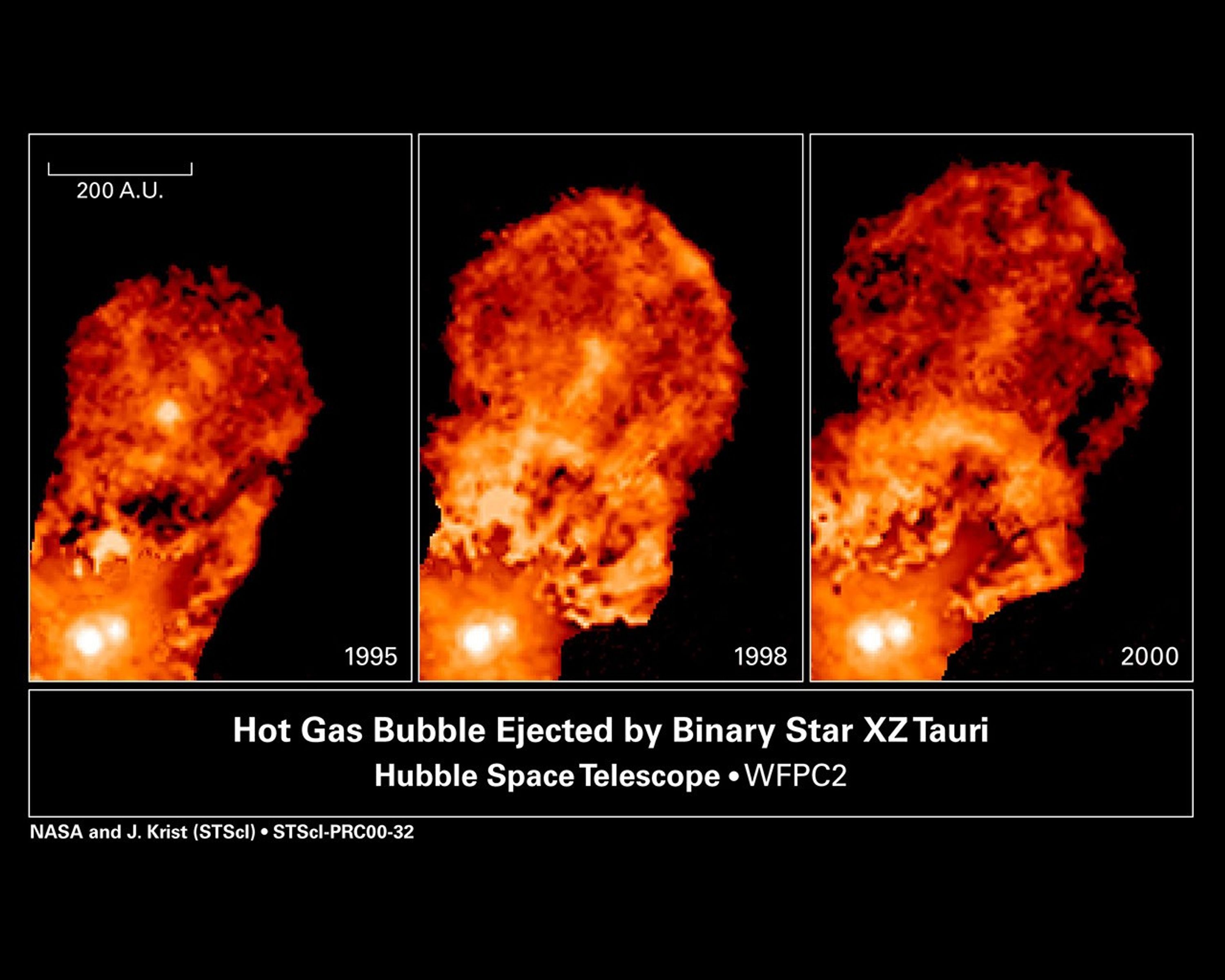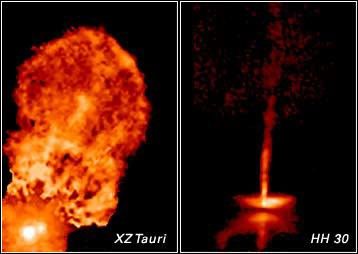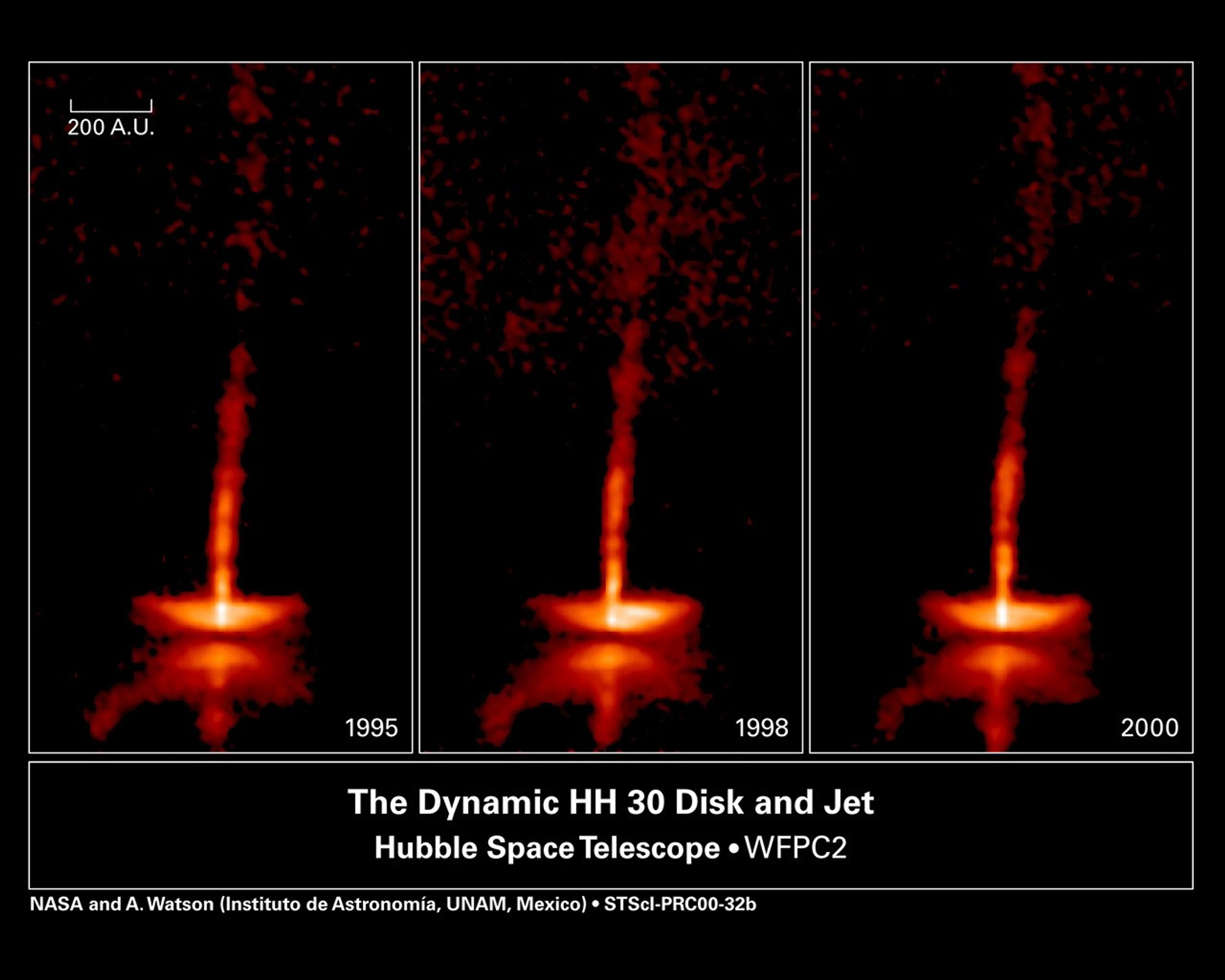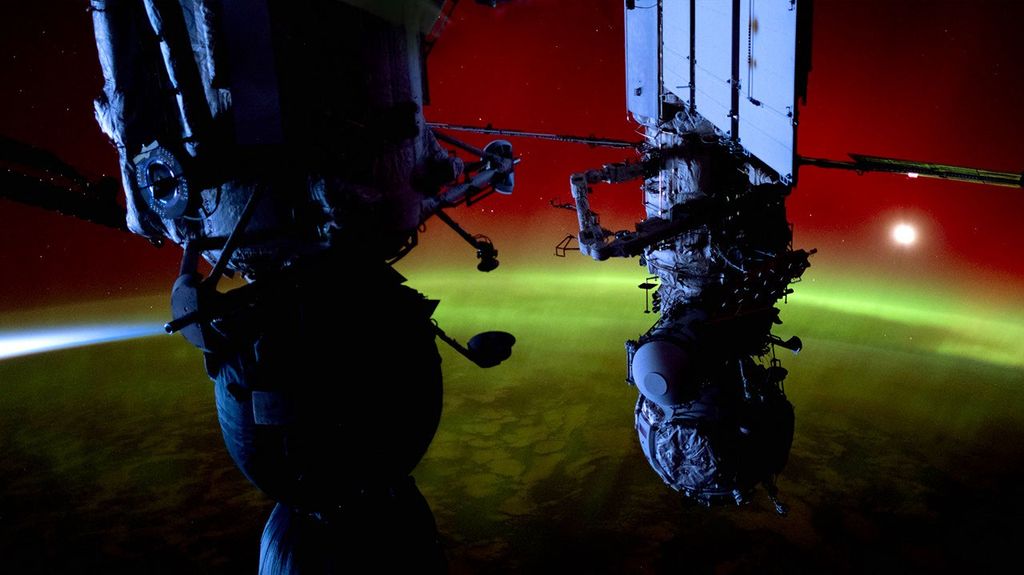1 min read
Hot Gas Bubble Ejected by Young Binary Star System XZ Tauri

These images taken with the Hubble Space Telescope's Wide Field and Planetary Camera 2 reveal the evolution of bubbles of glowing gas being blown out from the young binary star system XZ Tauri. Gas from an unseen disk around one or both of the stars is channeled through magnetic fields surrounding the binary system and then is forced out into space at nearly 300,000 miles per hour (540,000 kilometers per hour). This outflow, which is only about 30 years old, extends nearly 60 billion miles (96 billion kilometers).
Hubble first discovered this unique bubble in 1995, and additional observations were made between 1998 and 2000. These images show that there was a dramatic change in its appearance between 1995 and 1998. In 1995, the bubble's edge was the same brightness as its interior. However, when Hubble took another look at XZ Tauri in 1998, the edge was suddenly brighter. This brightening is probably caused by the hot gas cooling off, which allows electrons in the gas to recombine with atoms, a process that gives off light. This is the first time that astronomers have seen such a cooling zone "turn on."
These images provide an unprecedented opportunity to study the development of a very recent outflow from young (about 1 million years old) stars.
About the Object
- R.A. PositionR.A. PositionRight ascension – analogous to longitude – is one component of an object's position.04h 31m 40.0s
- Dec. PositionDec. PositionDeclination – analogous to latitude – is one component of an object's position.18° 13' 58.0"
- ConstellationConstellationOne of 88 recognized regions of the celestial sphere in which the object appears.Taurus
- DimensionsDimensionsThe physical size of the object or the apparent angle it subtends on the sky.Bubble Length: 5 arc seconds. Magnitude: R13 mag; I12 mag
About the Data
- Data DescriptionData DescriptionProposal: A description of the observations, their scientific justification, and the links to the data available in the science archive.
Science Team: The astronomers who planned the observations and analyzed the data. "PI" refers to the Principal Investigator.Hubble Space Telescope WFPC2 Imaging of XZ Tauri: Time Evolution of a Herbig-Haro Bow Shock: Krist, et. al., ApJ 515 L35 (1999) - InstrumentInstrumentThe science instrument used to produce the data.HST>WFPC2
- Exposure DatesExposure DatesThe date(s) that the telescope made its observations and the total exposure time.January 1995, March 1998, February 1999, February 2000
- FiltersFiltersThe camera filters that were used in the science observations.R band (F675W)
- Object NameObject NameA name or catalog number that astronomers use to identify an astronomical object.XZ Tauri
- Object DescriptionObject DescriptionThe type of astronomical object.T Tauri Star; Binary Star System
- Release DateSeptember 21, 2000
- Science ReleaseMovies from Hubble Show the Changing Faces of Infant Stars
- CreditNASA, John Krist (Space Telescope Science Institute), Karl Stapelfeldt (Jet Propulsion Laboratory), Jeff Hester (Arizona State University), Chris Burrows (European Space Agency/Space Telescope Science Institute)
Related Images & Videos

Movies from Hubble Show the Changing Faces of Infant Stars
Time-lapse movies made from a series of pictures taken by NASA's Hubble Space Telescope are showing astronomers that young stars and their surroundings can change dramatically in just weeks or months. As with most children, a picture of these youngsters taken today won't look...

Young Star HH30's Dynamic Disk and Jets
These images of HH 30 show changes over only a five-year period in the disk and jets of this newborn star, which is about half a million years old. The pictures were taken between 1995 and 2000 with the Wide Field and Planetary Camera 2 aboard NASA's Hubble Space Telescope....
Share
Details
Claire Andreoli
NASA’s Goddard Space Flight Center
Greenbelt, Maryland
claire.andreoli@nasa.gov































